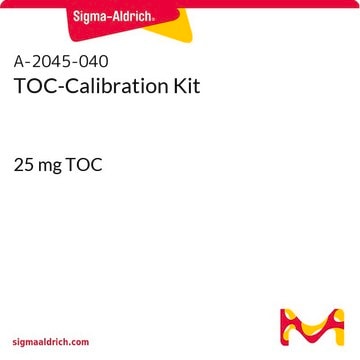PHR1028
p-Benzoquinona
Pharmaceutical Secondary Standard; Certified Reference Material
Sinónimos:
Quinona
About This Item
Productos recomendados
grado
certified reference material
pharmaceutical secondary standard
Nivel de calidad
Agency
traceable to USP 1056504
densidad de vapor
3.73 (vs air)
presión de vapor
0.1 mmHg ( 25 °C)
CofA
current certificate can be downloaded
temp. de autoignición
815 °F
técnicas
HPLC: suitable
gas chromatography (GC): suitable
mp
113-115 °C (lit.)
aplicaciones
pharmaceutical (small molecule)
Formato
neat
temp. de almacenamiento
2-8°C
cadena SMILES
O=C1C=CC(=O)C=C1
InChI
1S/C6H4O2/c7-5-1-2-6(8)4-3-5/h1-4H
Clave InChI
AZQWKYJCGOJGHM-UHFFFAOYSA-N
¿Está buscando productos similares? Visita Guía de comparación de productos
Descripción general
Pharmaceutical secondary standards for application in quality control, provide pharma laboratories and manufacturers with a convenient and cost-effective alternative to the preparation of in-house working standards.
Aplicación
Nota de análisis
Otras notas
Nota al pie de página
Productos recomendados
Palabra de señalización
Danger
Frases de peligro
Consejos de prudencia
Clasificaciones de peligro
Acute Tox. 3 Inhalation - Acute Tox. 3 Oral - Aquatic Acute 1 - Aquatic Chronic 1 - Eye Dam. 1 - Flam. Sol. 1 - Muta. 2 - Skin Corr. 1B - Skin Sens. 1 - STOT SE 3
Órganos de actuación
Respiratory system
Código de clase de almacenamiento
4.1B - Flammable solid hazardous materials
Clase de riesgo para el agua (WGK)
WGK 3
Punto de inflamabilidad (°F)
170.6 °F - closed cup
Punto de inflamabilidad (°C)
77 °C - closed cup
Elija entre una de las versiones más recientes:
Certificados de análisis (COA)
It looks like we've run into a problem, but you can still download Certificates of Analysis from our Documentos section.
Si necesita más asistencia, póngase en contacto con Atención al cliente
¿Ya tiene este producto?
Encuentre la documentación para los productos que ha comprado recientemente en la Biblioteca de documentos.
Los clientes también vieron
Nuestro equipo de científicos tiene experiencia en todas las áreas de investigación: Ciencias de la vida, Ciencia de los materiales, Síntesis química, Cromatografía, Analítica y muchas otras.
Póngase en contacto con el Servicio técnico








